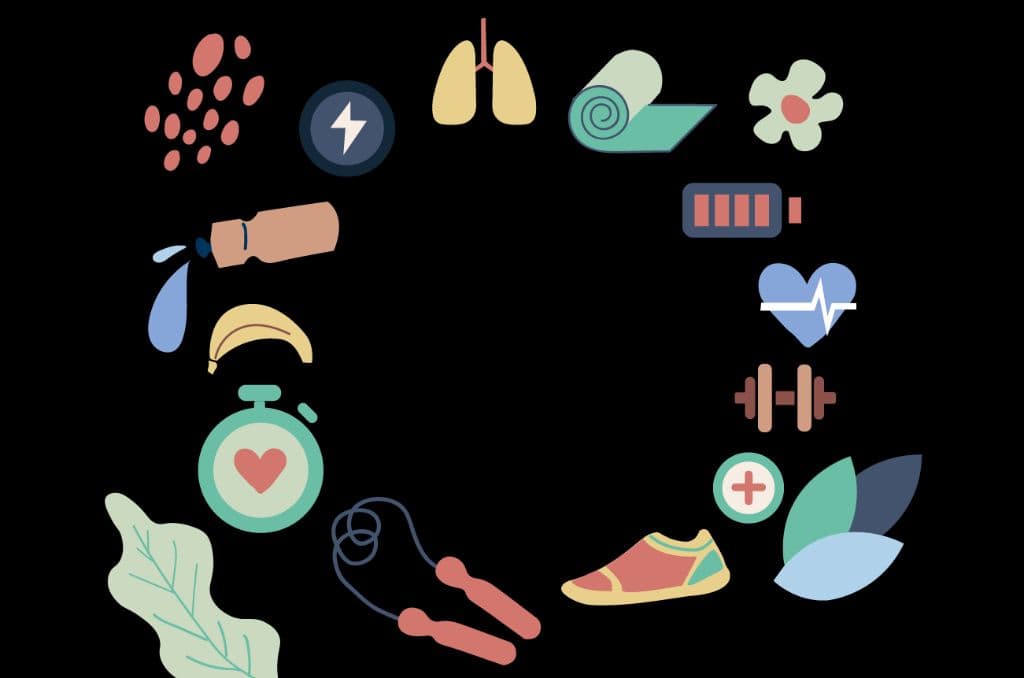This article is compiled by Sanjana Varma, a freelance writer at Proactive For Her.
How fond are we to delegate exercising to the last! Day after day we procrastinate and put off working out, and before you know it, months have passed and now you need help to get back on track. Between work, family and social events, it may seem daunting to add exercise to your to-do list. When was the last time you hit the gym or worked out of the comfort of your home? We have all been there. Despite knowing the benefits of exercising, we fail to make time for this essential activity. Getting back to exercising after a long hiatus is difficult. The pandemic has made us lazy, thrown our routine out of the window and isn’t showing any signs of bidding farewell. It’s time to dust yourself up and get that body moving. You need to ease into working out, slow and steady, take one day at a time, and build the strength, endurance and flexibility that you want.
We have compiled 10 strategies to help you get back to exercising like fish to the waters!
1. Seek motivation and then commit
Fitness should be a state of mind. You need to motivate yourself to take the first step. You need to decide why you want to work out and promise yourself to do it day after day especially when the motivation dies. Once the high of starting something new settles, you have to fall back on consistency and commitment. To stick to the grind, no matter what your mood is, or how many fun things are out there to do. That is how you will see the results you want.
Exercise is not about weighing a certain number or attaining a body shape to elicit validation from people around. Do it for yourself. Do it because it enables your body to function at its best and puts you in a good mental space. You can give yourself some external motivators like getting a comfortable workout outfit and new shoes. Indulge your sporty self in wearable trackers, yoga mats or even a sipper bottle! Do whatever it takes to get that body moving.
2. Reach out to your doctor
Once you have made up your mind to get fit, seek the help of your physician and a certified fitness trainer or physiotherapist. It's good to get a thorough body check-up and when you get the green signal from your doctor, it is time to take the big step. In case your doctor expresses some concern, ask them to list out activities that are safe for your condition and stay away from others.
Be sure to consult your doctor around the timing of workouts if you take medication that affects your blood pressure or blood sugar.
3. Setting Goals
Don’t forget to set S.M.A.R.T. (specific, measurable, attainable, realistic, and time-sensitive) goals. This will help stay on track, tweak things that are not working and keep you motivated even on those difficult days.
4. Schedule
Planning is just the beginning. Figure out when you can work out each week and stick to it. Choose a time that works for you. Whether it is 15 mins in the morning or 45 minutes in the evening, keep other distractions away and sweat those impurities off! Start with 3 days a week if you find it hard to get back. Progressively aim to work out for approximately 30 minutes,5 days a week.
5. Plan your mode of exercise and consistently increase your workout time
The first step before you dive back into a workout routine is to plan what you want your routine to look like, and how you want to get there. If it’s been a while since you last worked out, you’ll want to start small. Even a short amount of time off from the gym can undo some of the health gains you’ve made. Your stamina and strength will dip low. That’s why trainers insist on starting from the basics and build up as you gain strength.
Start with a few minutes a day of cardio, then work up to longer workouts, incorporating weights and even hiring a health coach or personal trainer.
Choose a form of exercise that you enjoy doing and make sure that you mix things up once in a while. Flexibility, functional training, strength and conditioning are all important, so make sure you include some form of it on different days.
A healthy adult should be working their way toward 150 minutes of exercise a week, according to the Department of Health and Human Services.
6. Basics to your rescue
It’s also always a good idea to make sure you have the basics down before easing back into a regular workout routine. Basic strength training exercises like squats, lunges, and planks show up in many variations in many different types of workouts, so you’ll want to ensure you have a good foundation before jumping right in.
7. Pre and Post-workout meals
Focus on just trying to re-establish an activity habit. Don’t dramatically change your diet and routine in the hope of quicker results. This will make you feel tired, grumpy and will not help you meet your goals. Start small, build the habit and incorporate a healthy diet as you move up the workout ladder. Try to have a pre-workout meal 30 minutes before you work out, stay hydrated and wrap it up with a post-workout meal.
8. It's non-negotiable! - Warm-up and Cooldown
Working out is not just about covering miles or ticking of reps. Warm-ups before workouts and cooldowns at the end, both of these are as important as the workout itself. Your routines should make you strong and flexible without putting you at risk of injury, so you won’t have to take weeks off from your workout routine again. Warm-up preps your body for the increase in activity and exercising with warmed up muscles will reduce your risk of injury. Cool-down allows your blood pressure and heart rate to return to a normal resting rate.
9. Active vs Passive Rest Days
Recovery is part of being active. Recovery days are an integral part of your regime. After you exercise specific muscle groups, let them rest for one or two days. This enables the muscle to heal and repair. Even on days where you don’t work out, your body is still recovering so replenish your body to function properly. You can have a mix of active days and passive rest days. You can add some sort of movement to your life like leisure walking, cycling, light stretches on days you are not up for serious workouts. This constitutes your active rest days. Passive rest days are those days where you are curled up on your bed engrossed in a good book or movie. Both are entirely acceptable and needed.
10. Just move that body
You don’t necessarily have to join a gym or spend hours running outside to get a good workout. The pandemic has shown us how to exercise effectively from the comfort of our homes. All you need is the will power to choose to work out. There will always be a ton of things to do and there will never be a perfect time but make it a priority.
Getting fit doesn’t necessarily mean push-ups and jogs, you can work those legs by taking the stairs, walking to the nearby store or even go for a long stroll with your family or friends. Make it a point to move around your office every half hour, especially if you have a sedentary job. Stretch your legs and neck to avoid discomfort. Playing football, badminton or cricket are also fun ways of exercising. Make an excuse just to move your body. Try to make moving your new mission.
Bear in mind that -Starting exercises after a long time may cause some mild discomfort.
Seek a medical practitioner’s guidance if you experience the following symptoms for a long while after your physical activity has stopped -
- Difficulty in breathing
- Chest pain
- Pain in your belly
- Palpitations
- Giddiness
- Splitting headaches
Finally, do ‘YOU’ : You are unique and so are your workout requirements
An activity good for a friend may not work for you. Switch and jazz up your routine according to your mood. For eg: jogging on Monday, cardio on Tuesday, Wednesday for strength training and so on. If going out doesn’t work for you, stick to home workouts with or without equipment. The main thing is to enjoy your workout sessions.
Listen and be kind to your body. When your body demands a total rest, give it. A good night's sleep can cure your workout aches. . Invest in your fitness, invest in yourself! Don those joggers and sweat the hell out! You got this!
Disclaimer - This information is provided for educational purposes and should not be construed as medical advice. Please consult with your healthcare practitioners before undertaking any changes in your diet or adding supplements.
Proactive is a digital clinic for women, offering accessible, personalized, and confidential healthcare solutions. We offer products and services for out-patient health concerns of Indian women, across their lifetime - from puberty to pregnancy to menopause. To know more on the sexual and reproductive health of women, visit https://www.proactiveforher.com/

